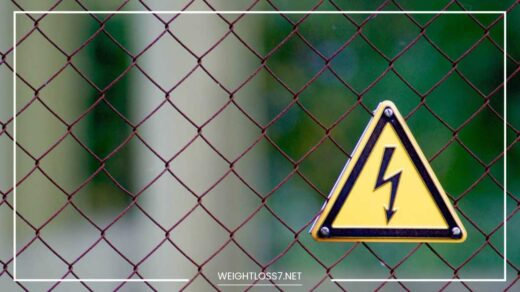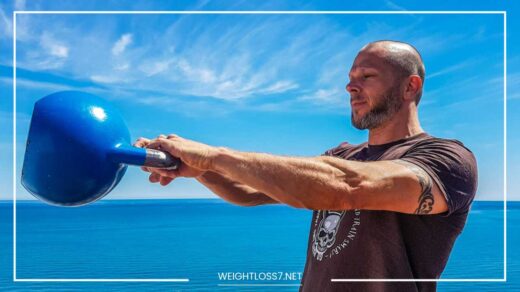How to Lose Face Fat

Lose Face Fat
Sculpting Your Look: A Comprehensive Guide to Reducing Face Fat
The human face is a window to the soul, a canvas of expression that reflects our emotions and experiences. While its shape is largely determined by bone structure and genetics, the amount of facial fat plays a significant role in how we perceive ourselves and how others perceive us.
If you’re looking to achieve a slimmer, more defined facial appearance, there’s good news: you have more control than you might think.
This comprehensive guide delves into the science behind facial fat and explores a variety of effective strategies to reduce it.
We’ll move beyond simple tips and delve into the “why” behind each recommendation, providing a deeper understanding of how these strategies work in harmony to achieve your desired results.
Demystifying Facial Fat: A Scientific Look
Facial fat is primarily composed of subcutaneous fat, stored just beneath the surface of the skin. Its distribution is influenced by a complex interplay of factors, including:
- Genetics: Your genes predetermine the number and distribution of fat cells in your face. Some people naturally carry more facial fat than others.
- Age: As we age, our skin loses elasticity and collagen, leading to a looser appearance and potentially more noticeable fat deposits.
- Hormones: Fluctuations in hormone levels, particularly estrogen and testosterone, can significantly impact facial fat distribution, especially during puberty, pregnancy, and menopause.
- Body Fat Composition: Overall body fat percentage plays a crucial role. When you lose weight, your face often slims down as well.
While spot reduction (burning fat in a specific area) is a myth, certain strategies can promote overall fat loss, which will translate to a slimmer face as a well.
Dietary Strategies for a Sculpted Face: Fueling Your Transformation
The food you choose plays a vital role in shaping your face. Here’s how to leverage your diet for a slimmer visage:
-
The Power of Fiber: Fiber is your friend in the fight against facial fat. It keeps you feeling fuller for longer, reducing cravings and preventing overeating. Focus on incorporating plenty of fruits, vegetables, and whole grains into your diet. These foods are not only packed with fiber but also provide essential vitamins and minerals for overall health.
-
Understanding the Glycemic Index: The glycemic index (GI) measures how quickly a food raises blood sugar levels. Spikes in blood sugar can trigger insulin release, a hormone that promotes fat storage. Opt for low-GI foods like legumes, whole grains, and non-starchy vegetables to maintain stable blood sugar levels and prevent fat accumulation.
-
Taming the Sugar Monster: Excessive sugar consumption can lead to weight gain and inflammation, both of which can impact your facial appearance. Limit sugary drinks, processed snacks, and desserts. Opt for natural sweeteners like fruits and stevia instead.
-
The Protein Advantage: Protein is a crucial building block for muscle tissue. It also promotes satiety, keeping you feeling full for longer and reducing calorie intake. Include lean protein sources like chicken, fish, lentils, and tofu in your diet.
-
Stay Hydrated: Dehydration can lead to water retention, potentially causing facial puffiness. Aim for at least eight glasses of water daily. Not only will this keep you hydrated, but it can also help flush out toxins and improve skin health.
-
Mind Your Salt Intake: Sodium can cause water retention, leading to facial bloating. Limit processed foods, restaurant meals, and added table salt. Opt for fresh, whole foods and natural seasonings to add flavor to your meals.
Exercise Strategies for a Sculpted Face: Moving Your Way to a Slimmer You
Exercise isn’t just about building muscle and burning calories; it can also have a significant impact on your facial appearance. Here’s how to incorporate exercise into your routine for a slimmer face:
-
Cardio: The Foundation for Fat Loss: Regular cardiovascular exercise helps burn calories and promotes overall fat loss, which includes facial fat. Aim for at least 150 minutes of moderate-intensity cardio or 75 minutes of vigorous-intensity cardio per week. Activities like running, swimming, dancing, or cycling are great options.
-
The Importance of Intensity: High-intensity interval training (HIIT) elevates your metabolic rate for a longer period after your workout, promoting more calorie burning throughout the day. HIIT workouts typically involve alternating between short bursts of intense exercise and periods of recovery.
-
Strength Training: Building a Stronger, Slimmer You: Don’t neglect strength training! Building muscle mass throughout your body boosts metabolism and helps burn more calories at rest. Include strength training exercises that target major muscle groups 2-3 times a week. Not only will this help you achieve a toned physique but can also contribute to a more defined jawline.
Facial Exercises: Are They Worth the Effort?
The effectiveness of facial exercises for reducing fat is a topic of ongoing debate. While some studies suggest they might improve muscle tone and definition, leading to a slimmer appearance, more research is needed.
However, facial exercises are generally considered safe, so you can try them alongside other strategies. Here are some popular options to consider:
-
Cheek Puffs: Puff out your cheeks for a few seconds, then release. Repeat 10-15 times. This exercise targets the zygomaticus major muscle, which helps elevate the corners of your mouth and may contribute to a more lifted appearance.
-
Fish Face: Pucker your lips as if you’re giving a kiss, hold for a few seconds, then relax. Repeat 10-15 times. This exercise works the orbicularis oris muscle, which surrounds the mouth. While it might not directly reduce fat, it can help tone and define the lips.
-
Jawline Clench: Clench your jaw as if you’re chewing gum, hold for a few seconds, then relax. Repeat 10-15 times. This exercise targets the masseter muscle, located on the sides of the jaw. While toning this muscle might not directly result in fat loss, it can contribute to a more defined jawline.
-
Neck Stretches: Tilt your head back gently and look towards the ceiling. Hold for a few seconds, then relax. Repeat 10-15 times. You can also perform side-to-side neck stretches. These stretches target the platysma muscle in the neck, which can contribute to a sagging jawline. Keeping this muscle toned may help create a more sculpted appearance.
Important Considerations: Consistency is Key
Remember, consistency is key when it comes to seeing results from any facial fat-reduction strategy. Aim to incorporate these exercises into your daily routine, ideally performing them 2-3 sets of 10-15 repetitions each. Be patient, as it may take several weeks or even months to see noticeable changes.
Lifestyle Habits for a Slimmer Face: Beyond Diet and Exercise
A holistic approach goes a long way in achieving lasting results. Here are some lifestyle habits that can complement your diet and exercise efforts:
-
Prioritize Sleep: When sleep-deprived, your body produces more cortisol, a stress hormone that can lead to weight gain and fluid retention. Aim for 7-8 hours of quality sleep each night. Adequate sleep also promotes cell regeneration, which can contribute to a more youthful and toned appearance.
-
Manage Stress: Chronic stress can also elevate cortisol levels. Practice relaxation techniques like yoga, meditation, or deep breathing to keep stress under control. Stress management can not only benefit your physical health but also improve your mental well-being.
-
Limit Alcohol Consumption: Alcohol is high in calories and can dehydrate you, potentially leading to facial puffiness. Moderate your alcohol intake or eliminate it altogether.
-
Beware of Smoking: Smoking not only damages your overall health but can also contribute to premature facial aging and wrinkles. Quitting smoking is one of the best things you can do for your health and appearance.
Seeking Professional Help: When to Consult a Doctor
If you have concerns about excessive facial fat or experience sudden facial puffiness, consult a doctor to rule out any underlying medical conditions. Certain medical conditions, such as Cushing’s syndrome or allergies, can cause facial swelling.
Final Word: A Multi-Faceted Approach to a Slimmer You
Reducing facial fat requires a multi-faceted approach. By combining a healthy diet, regular exercise, stress management, potentially facial exercises, and healthy lifestyle habits, you can achieve a sculpted and toned look.
Remember, consistency and patience are key. Embrace these strategies, celebrate your progress, and enjoy a healthier, more confident you!
Additional Considerations:
-
The Importance of Sun Protection: Sun exposure can damage skin collagen, leading to a loss of elasticity and a more sagging appearance. Always wear sunscreen with SPF 30 or higher daily, even on cloudy days.
-
The Role of Facial Massage: Facial massage may help improve lymphatic drainage and reduce facial puffiness. However, more research is needed to determine its long-term effectiveness for reducing facial fat.
-
Cosmetic Procedures: If you’re looking for more dramatic results, consult a qualified dermatologist or cosmetic surgeon to discuss options like facial liposuction or fillers. However, these procedures are invasive and carry potential risks.
By incorporating the strategies outlined in this guide and making healthy choices a way of life, you can achieve a slimmer, more sculpted face and radiate confidence from within.
Beyond the Basics: Advanced Strategies for Reducing Facial Fat
While the core principles of diet, exercise, and lifestyle habits form the foundation for reducing facial fat, there are additional strategies you can explore for a more comprehensive approach. Here’s a deeper dive into some advanced techniques:
Dietary Strategies:
-
Mindful Eating: Pay attention to your hunger and fullness cues. Eat slowly and savor your food to avoid overeating. This practice can help you stay in tune with your body’s needs and prevent unnecessary calorie intake that can contribute to facial fat accumulation.
-
Intermittent Fasting: This dietary pattern involves cycling between periods of eating and fasting. Studies suggest that intermittent fasting may promote weight loss and improve metabolic health. While more research is needed to determine its specific impact on facial fat, it can be a valuable tool for overall weight management.
-
Supplements: Certain supplements may offer some benefits for reducing facial fat. However, it’s crucial to consult your doctor before starting any supplements.
-
Green Tea Extract: Green tea extract contains catechins, which may help boost metabolism and promote fat burning.
-
L-Carnitine: This amino acid plays a role in transporting fatty acids into cells for energy production. Some studies suggest it may enhance fat burning during exercise.
-
CLA (Conjugated Linoleic Acid): CLA is a type of fatty acid found in meat and dairy products. Some research suggests it may help reduce body fat, potentially impacting facial fat as well.
-
Exercise Strategies:
-
Facial Yoga: This practice involves performing specific facial movements and exercises to target and tone facial muscles. While research is ongoing, some studies suggest facial yoga may improve muscle tone and definition, leading to a more sculpted appearance.
-
Targeted Cardio: Certain cardio exercises, like facial grimacing while running or cycling, may offer additional benefits for facial muscle toning. However, more research is needed to confirm their effectiveness.
Advanced Techniques:
-
Radiofrequency Treatments: This non-invasive procedure uses radio waves to heat deeper skin layers, stimulating collagen production and potentially tightening the skin. While it can be effective for some, results may vary and may require multiple treatments.
-
CoolSculpting: This non-invasive fat-reduction procedure uses controlled cooling to target and destroy fat cells. While CoolSculpting is FDA-approved for various areas of the body, its effectiveness for facial fat reduction is still under investigation.
Remember: It’s important to consult a qualified healthcare professional before starting any advanced techniques or supplements to ensure they’re safe and appropriate for you.
Maintaining Results: Building Sustainable Habits
The key to long-term success in reducing facial fat lies in building sustainable habits. Here are some tips to maintain your results:
-
Find an Exercise Routine You Enjoy: Consistency is key. Choose activities you find enjoyable so you’re more likely to stick with them in the long run.
-
Make Healthy Eating a Lifestyle: Don’t view a healthy diet as a temporary fix. Embrace healthy eating habits as a way of life to maintain a healthy weight and facial appearance.
-
Prioritize Self-Care: Manage stress effectively, get enough sleep, and prioritize activities that promote overall well-being. This holistic approach will contribute to a healthier and more radiant you.
Embrace Your Journey:
Remember, reducing facial fat is a journey, not a destination. Be patient with yourself, celebrate your progress, and focus on the positive changes you’re making for your health and well-being.
By incorporating the strategies outlined in this comprehensive guide, you can achieve a slimmer face and radiate confidence from within.

















